With a reputation of being modern and diverse, the small island nation of Singapore has become one of Southeast Asia’s hottest destinations, and it’s not just because of “Crazy Rich Asians”. On a visit to Singapore you’ll get to experience futuristic architecture, incredible food, and a beautiful blend of cultures in one of the world’s most modern cities.
Often used as a stopover while exploring other areas in the region, Singapore has a way of becoming the main attraction itself. So you’ll want to have an idea of what to do in Singapore in 3 days before arriving. Allow our Singapore itinerary to be your guide and to show you all the best places to visit in Singapore to fully capitalize on your time there.
Best Time to Visit Singapore
Once you’ve decided on visiting Singapore, you’ll want to consider the timing of your trip. Because of its placement near the equator, Singapore doesn’t experience the kind of big changes in weather that are seen elsewhere in more northern parts of Asia. That makes it a pretty reliable year-round destination, with generally hot and humid weather, but there are still reasons to think carefully about when you plan your visit.
Probably the worst time to visit is during Singapore’s wet season which is from November through January. Not only does the island experience more rain than usual at this time of year, but a rise in tourists looking to escape winter make this Singapore’s high season. Expect prices to be at their highest during these months.
Instead, look at the months of February through May, widely considered the best time to visit Singapore. These months fall in the local dry season, but you should still expect occasional rain as there’s always a chance of it in Singapore. Later months like June and July are still the dry season but tend to be less ideal as it can get hazy and the annual “Great Singapore Sale” event draws in a lot of visitors.
Check flights to Singapore from the USA (from $339) and UK (from £337)
How to Get Around Singapore
While there are several major sights located around the downtown area of the city, many of Singapore’s attractions are spread out. Thankfully, you have more options than simply walking everywhere.
Singapore is known as a modern, developed country and that certainly extends to its public transport system. Made up of MRT metro, LRT metro, and buses, the network easily covers all the places you’ll want to visit while in Singapore. The two metro transit systems are reasonably priced and a fast way to get about, but there are only a limited number of lines at this stage. Singapore’s buses fill the gaps but can be a slower option due to traffic. To use public transport, you can either purchase a rechargeable EZ-link or Nets FlashPay card, a special Singapore Tourist Pass, or use a contactless bank card. Of course, there’s also always taxis and Grab, Southeast Asia’s equivalent of Uber.
Another great way to get around Singapore is on a Hop-On Hop-Off Bus. You can buy 24- and 48-hour bus tickets here.
Chances are you’ll be arriving for your visit through Singapore’s airport, which means you’ll need to know how to get from the airport to the city center. You can take a taxi which may be the fastest option, but also the most expensive. However, it’s not much slower to hop on the MRT from the airport and in roughly 35 minutes you’ll be in downtown. Taking the MRT you’ll need to change at Tanah Merah, but it’s quite easy to navigate and will only cost S$1.74 on an EZ-link card.
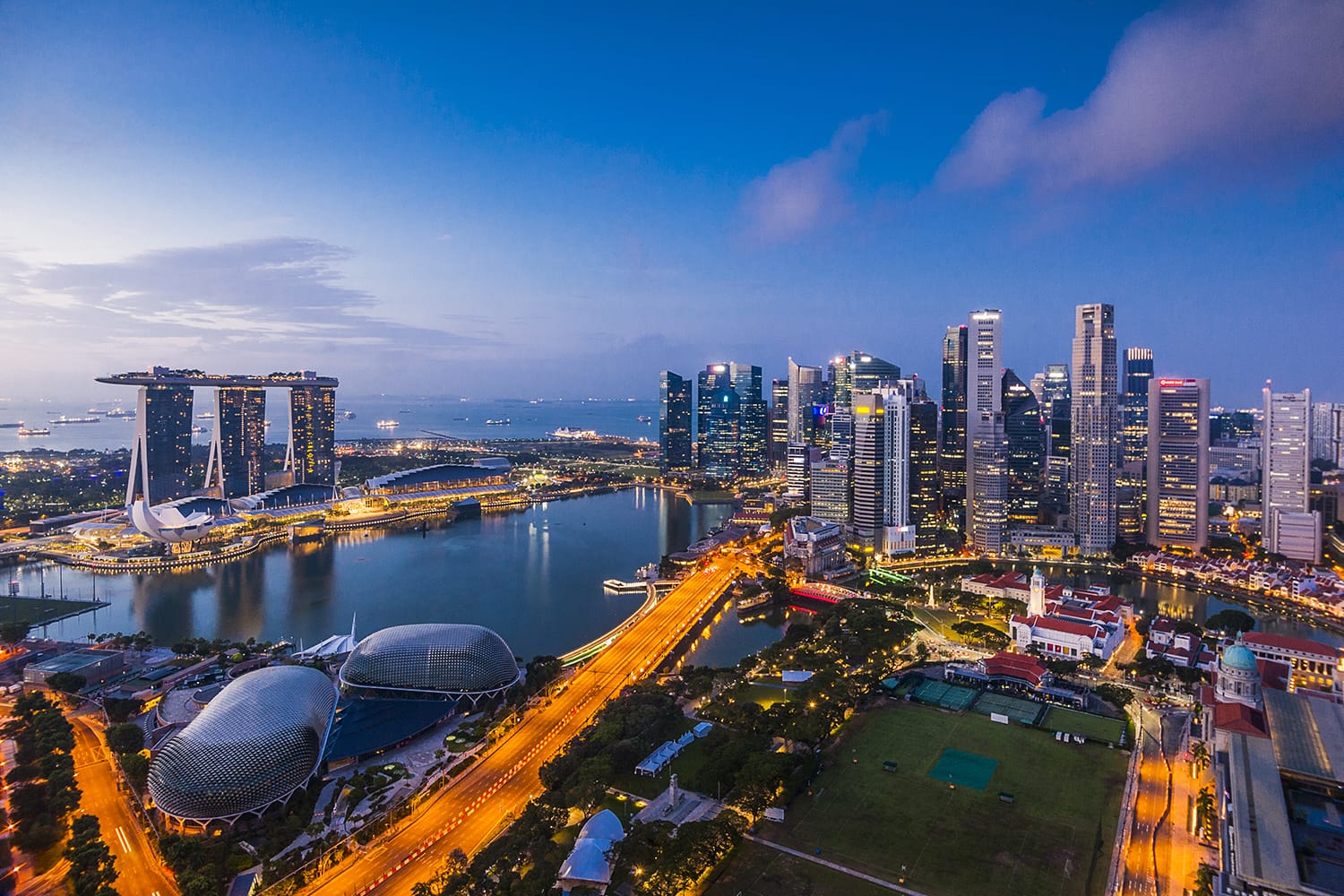
Where to Stay in Singapore
Deciding on where to stay is often the most stressful step of planning any trip to a new place. After all, the right accommodation makes such a difference and you don’t yet know the city’s layout. Since Singapore is an established tourist destination, you won’t have any problem finding hotels and hostels to stay in. The challenge then is working out where to stay in Singapore, because each of the different districts has its own benefits.
Generally, the best places to stay in Singapore are the Downtown Core and Old Colonial District as they are the most central locations. That being said, other good neighborhoods close by include Chinatown, Marina Bay, out towards Orchard Road, and Little India. Thanks to Singapore’s public transport, you won’t have much trouble getting to food and attractions no matter where you stay, but these spots tend to have those things waiting for you on your doorstep.
To treat yourself during you stay in Singapore, choose the iconic Marina Bay Sands. Thanks to its unique design, this five-star hotel is known around the world and offers guests every comfort. Enjoy spacious rooms, panoramic city views, and exclusive access to the hotel’s stunning rooftop infinity pool, not to mention the huge mall found inside the Marina Bay Sands complex. Our other recommendations for luxury hotels in Singapore can be seen here.
For a comfortable stay without the hefty price tag, look no further than the Hotel G Singapore. Rooms inside this four-star hotel boast tastefully designed decor and guests have access to two on-site restaurants and a fitness center. The hotel’s location also couldn’t be better, situated walking distance from both Little India and Orchard Road.
You should also look at Airbnb for affordable accommodation in notoriously expensive Singapore. For recommendations, check out our list of the best Airbnbs in Singapore.
There’s not a lot of cheap accommodation available for backpackers in Singapore, but one of the best value places to stay is Capsule Pod Boutique Hostel. With a prime location in Chinatown and beautifully designed capsule pods with privacy curtains, it has all you could ask for considering its price.
For more accommodation options in Singapore check out Booking.com. They continuously offer the best rates and their custom service is on point.
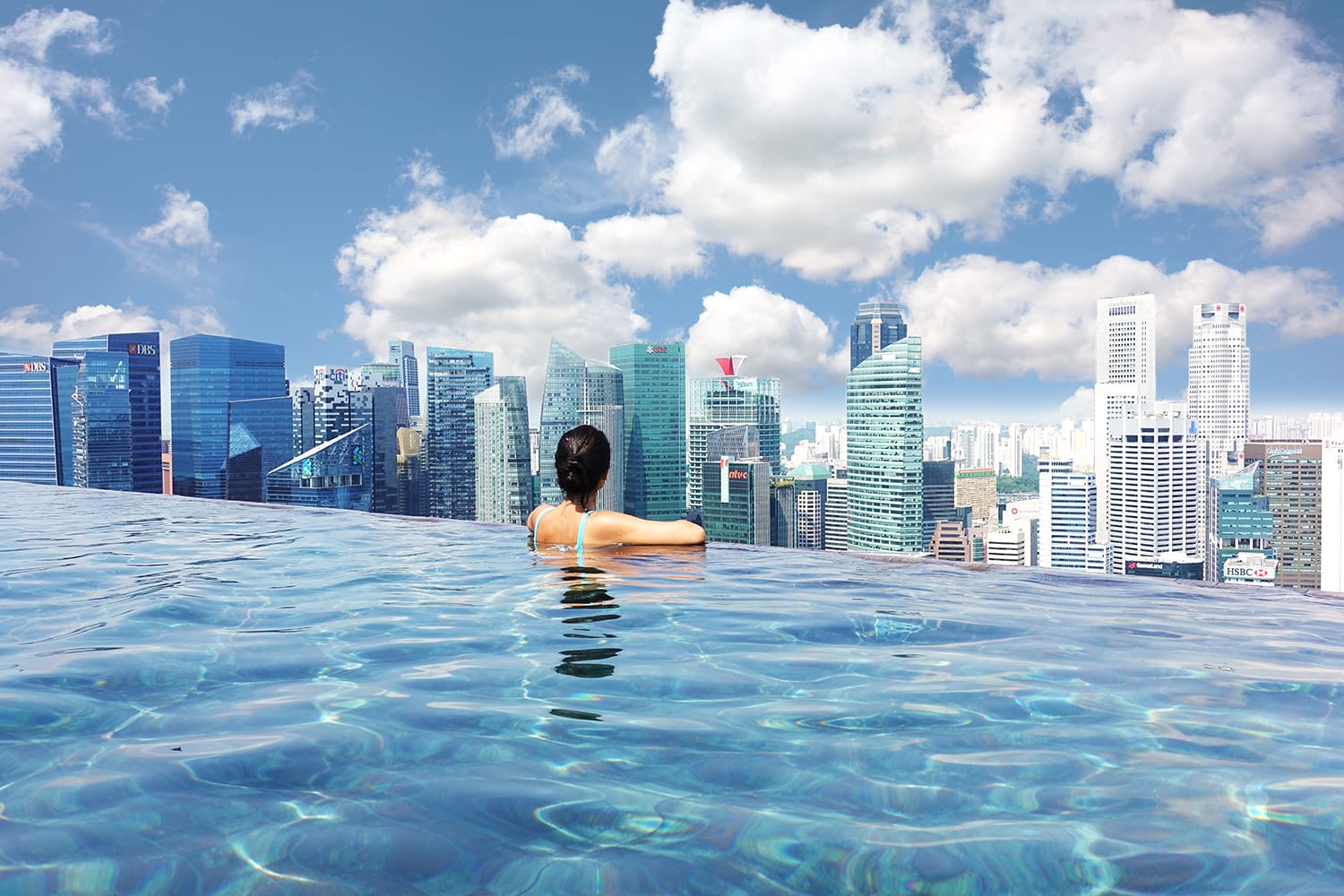
The Perfect 3-Day Singapore Itinerary
While you could just stumble around your three day visit, if you want to experience the best of Singapore, you’ll need a guide like this one to show you around this world-class city. Following our Singapore travel itinerary you’ll be able to comfortably cover the top sights and make the most of your holiday.
With our Singapore guide in-hand you’ll be able to explore many of the different things that make Singapore so fascinating. Your three day visit will not only take you to famous attractions that showcase Singapore’s modern development, but also highlight the history and longstanding multicultural nature of this island nation. You won’t just be restricted to the city center either, as you’ll have the opportunity to experience destinations right round this tiny country.
However, before we get to our Singapore itinerary, we just wanted to remind you to purchase travel insurance. You never know what will happen and, trust us, you do not want to get stuck with thousands of dollars in medical bills. As a wise man once said, “If you can’t afford travel insurance, you can’t afford to travel.” So don’t leave home without it.
SafetyWing offers travel insurance for only about $10 a week, making it a no-brainer to get. You can get a quick, non-binding quote below:

SafetyWing is, of course, not the only option available. Two other popular alternatives are World Nomads and Heymondo.
Now that we’ve discussed that vital subject, it’s time to look at all the best things to do in Singapore during your visit. With all of them to look forward to, you won’t be able to wait for your 3 days in Singapore to start.
Singapore Itinerary: Day 1
Start your visit to Singapore in the city’s Colonial District before moving onto the core part of Downtown, full of Singapore’s most iconic sights.
Fort Canning Park
Since Singapore is often called a “City in a Garden”, it seems fitting that our first stop is the lovely green space of Fort Canning Park. Right in the middle of the city, this park across Fort Canning Hill is not only a tranquil garden but also a place of great history. The history of Fort Canning Park is closely tied to that of Singapore; it was the site where Sir Stamford Raffles declared the city a British territory in 1823, and also where Singapore surrendered to the Japanese in 1942.
Exploring Fort Canning Park, you get a nice balance of nature and historic landmarks as you wander its trails. The park is dominated by great big trees and a wonderful variety of tropical plants that lend a serene quality. But there are also impressive landmarks like the striking Gothic Gate and the Fort Canning Lighthouse. The most noticeable landmark though is The Battlebox, a museum on the British surrender in WWII.
You can book a guided tour of the Battlebox here.
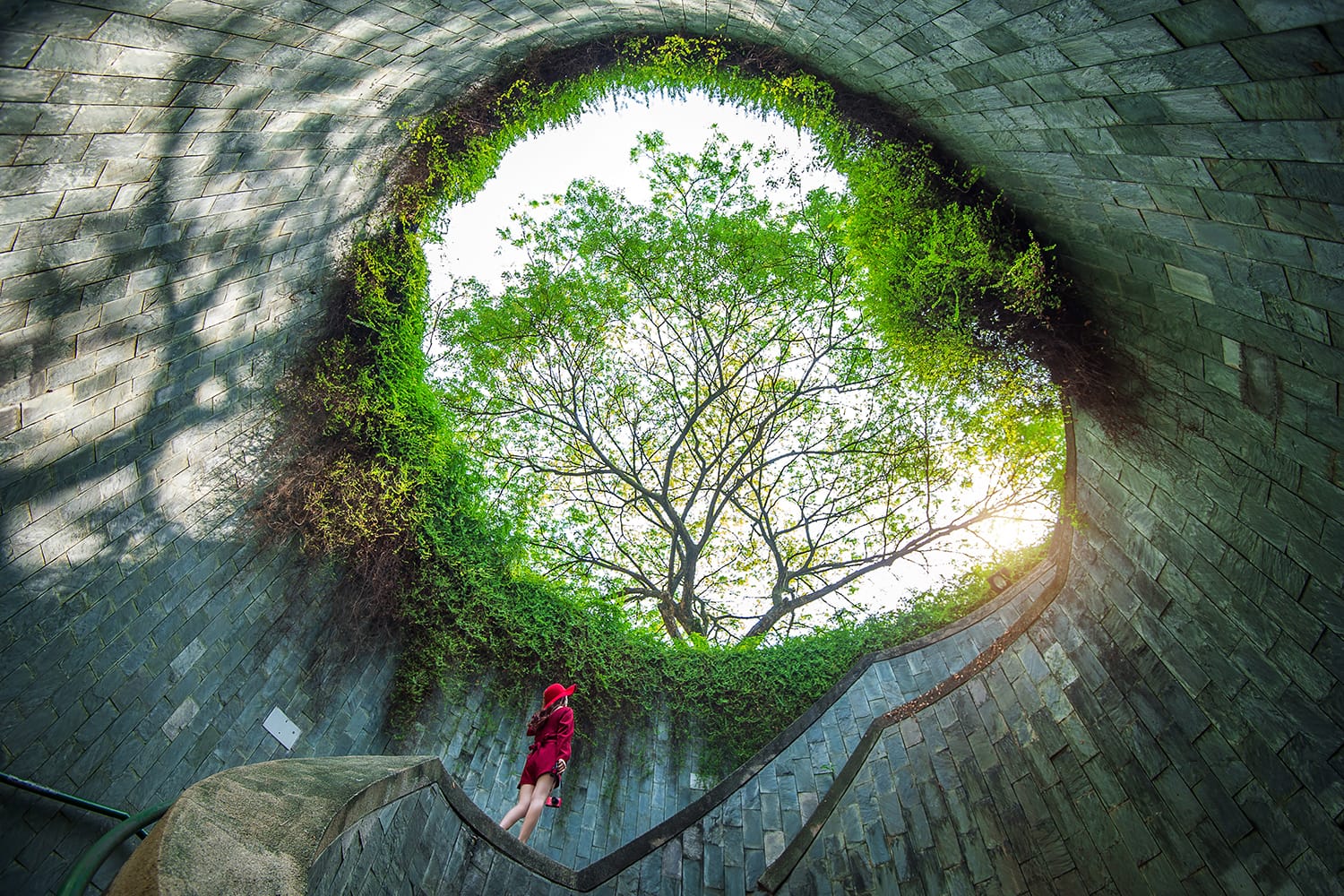
National Museum of Singapore
Just down from the hilltop park is one of Singapore’s most important museums, the National Museum of Singapore. The two main sections of the museum are the Living Galleries and the History Gallery. The Living Galleries uses the themes of food, photography, fashion, and film to explore the culture of Singapore. Over in the History Gallery visitors are taken through the different eras of Singapore’s past to its present as a modern metropolis. Exhibits here make strong use of multimedia, so you can hear from historical characters about what life was like in different periods, for example when the country was under British colonial rule or Japanese occupation.
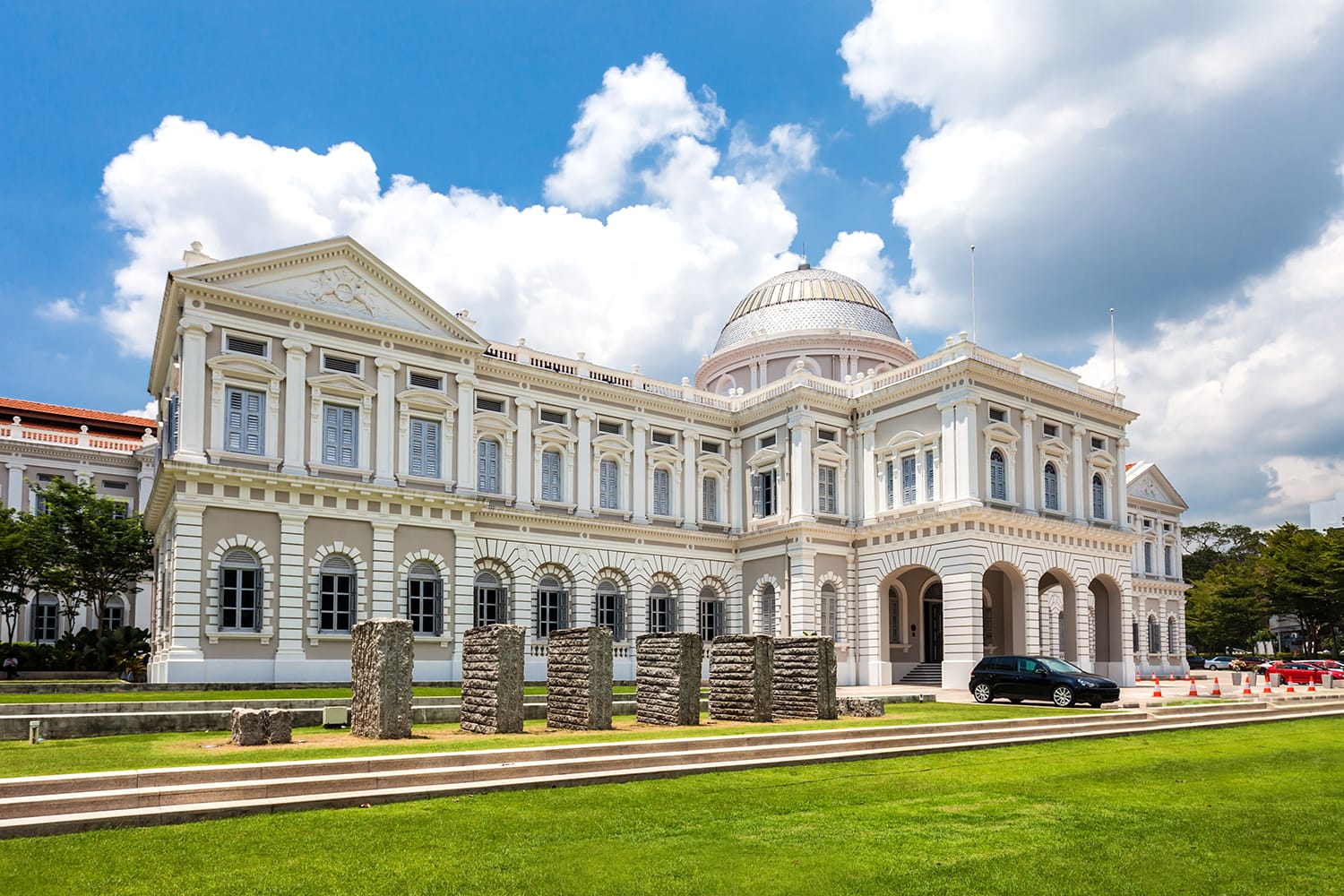
National Gallery Singapore
Moving from one incredible museum to another, we find ourselves at Singapore’s former Supreme Court, only it now houses the National Gallery Singapore. Inside this exceptional gallery, you’ll have the chance to see art from Singapore and Southeast Asia that spans the last couple hundred years. See how art in Singapore has evolved over the centuries, from its early colonial influences to where it stands today. A similar permanent exhibition takes you through the artistic trends of the wider region, making it one of the most important galleries in all of Southeast Asia.
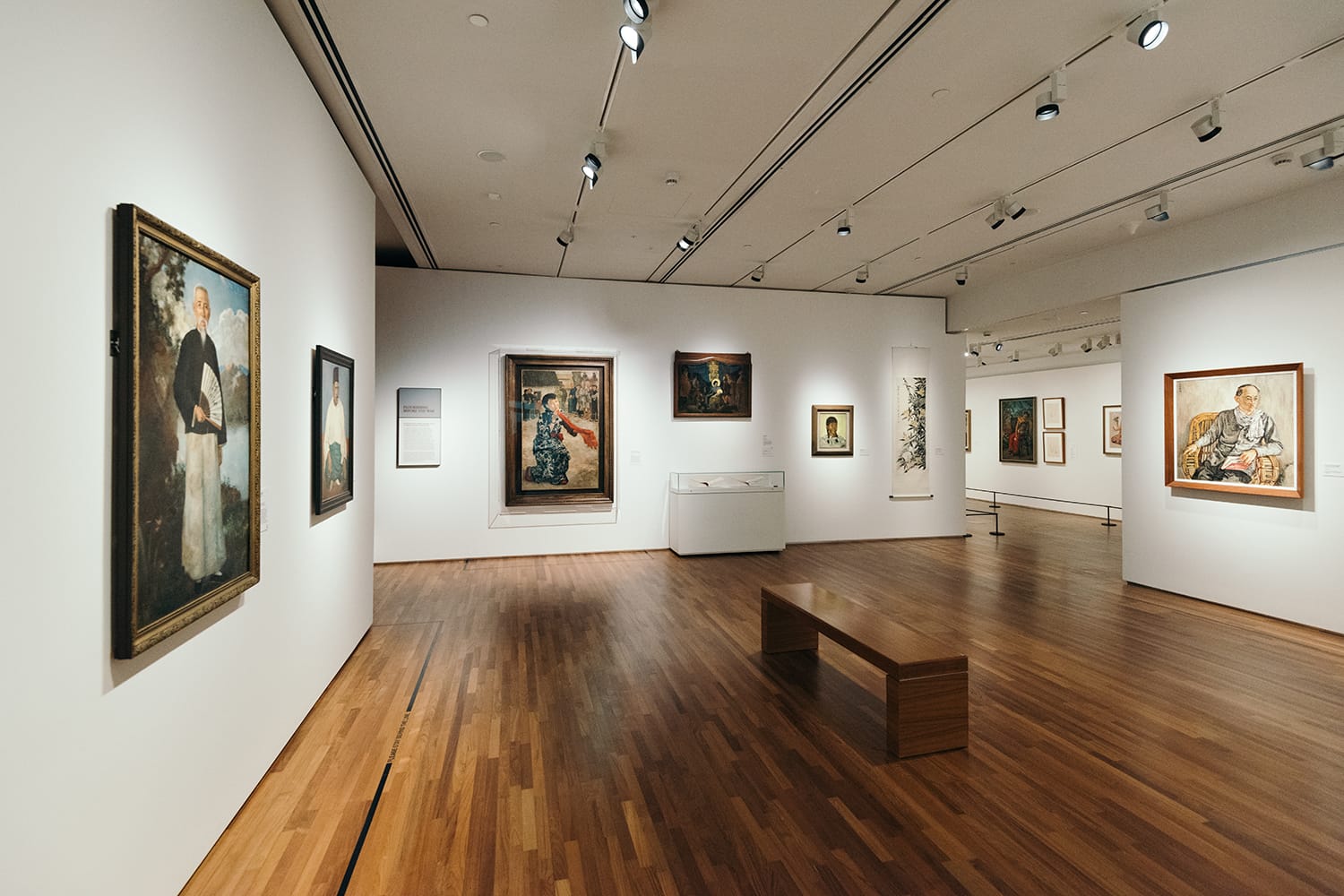
Merlion
Just a short walk from the National Gallery you’ll reach the waterfront area of Singapore’s Downtown. Crossing one of the many bridges there, you’ll soon find yourself standing in front of an iconic Singapore landmark, the Merlion. It may have only been added to the city’s waterfront in 2002, but like many landmarks in Singapore, it didn’t take long for it to become an icon. Stand with dozens of other tourists to get a photo of this magnificent fountain with the city skyscrapers or Marina Bay Sands as a backdrop.
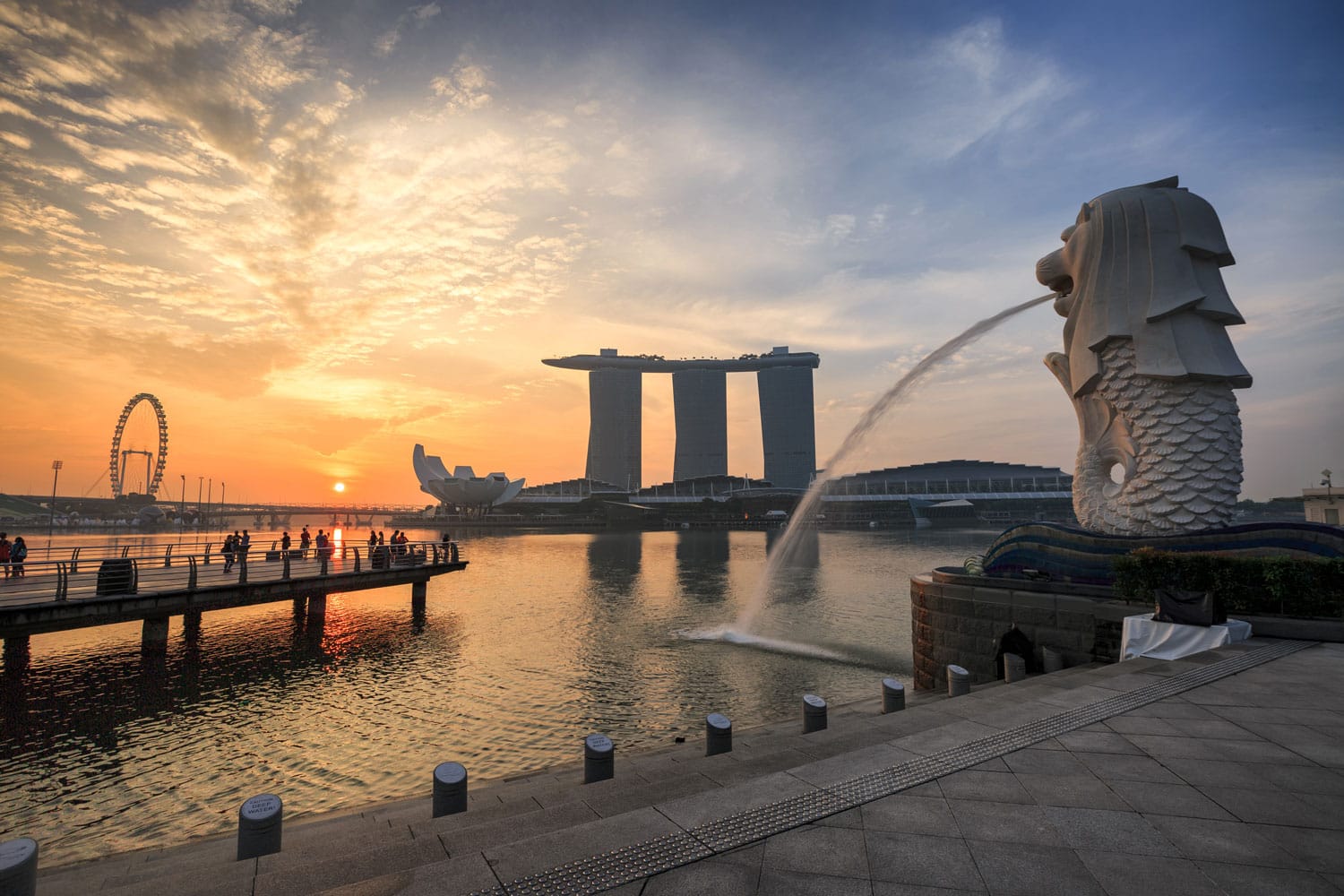
Marina Bay Sands
Speaking of Marina Bay Sands and Singapore icons, our next stop is this incredible hotel which has become a symbol of the city. With its three towers and surfboard top, the Marina Bay Sands has come to define Singapore’s skyline and is now one of the most popular spots in the city. While partly a hotel, the complex is also home to a mall full of designer stalls, restaurants, and a theatre. Outside in a structure shaped like a lotus you’ll find the city’s ArtScience Museum. And while the infinity pool that spans the hotel’s SkyPark is reserved for guests only, tourists can visit the Observation Deck for some superb city views. You can buy your skip-the-line ticket to the Observation Deck here.
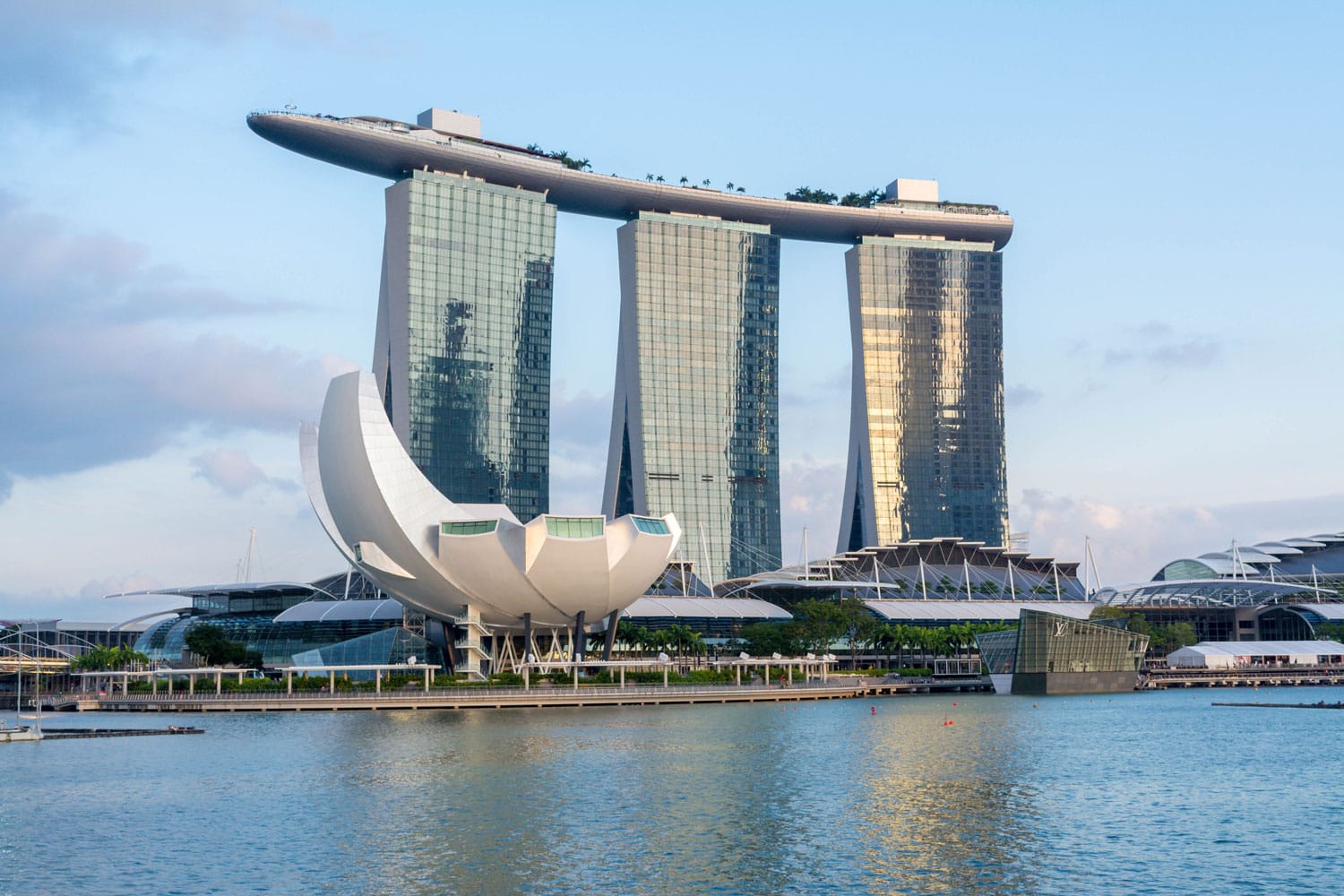
Gardens by the Bay
Combining Singapore’s love of modern design and greenery, you have the unbelievable Gardens by the Bay. Inside this huge nature park are they botanical gardens, biodomes, and the park’s signature Supertrees. These huge tree-shaped structures have plants incorporated into their frames and are joined by an elevated walkway, allowing you to see the park from a whole new perspective.
Often overshadowed by the Supertree Grove, the other biodomes in the park are fantastic too. Inside the futuristic Cloud Forest Dome there’s even a 35-meter-high waterfall. Even though you may want to rush here upon arriving in the city, it’s worth leaving Gardens by the Bay until later in the day as the park truly transforms come nighttime, with the Supertree Grove illuminated in magical effects.
If you’re looking for somewhere to pass the time before night hits, take a walk over to the Marina Barrage and watch people fly kites as the sun sets over Singapore.
Avoid waiting on long lines and buy your skip-the-line ticket to the Gardens by the Bay in advance here.
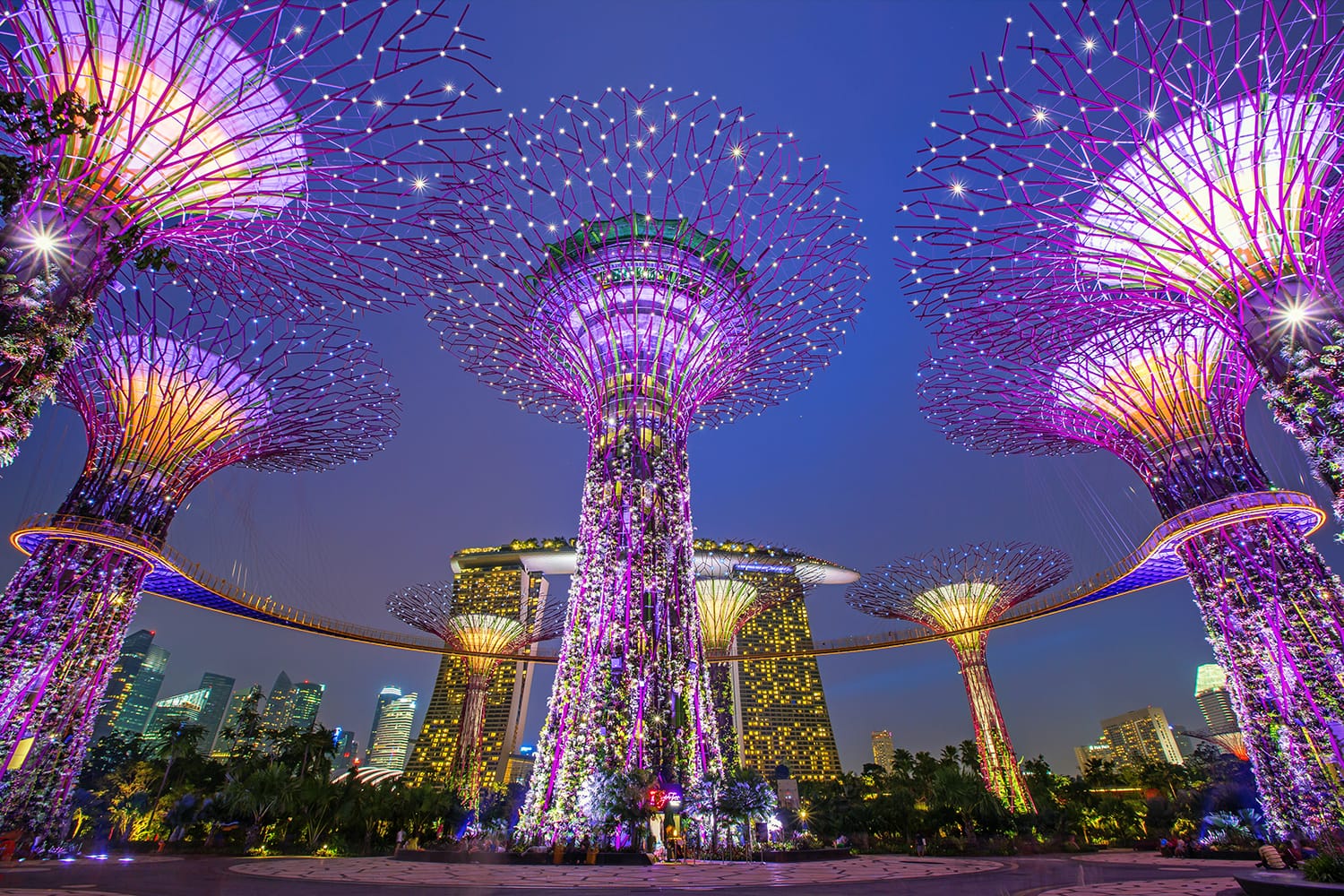
Maxwell Hawker Centre
There’s really only one way to end your days in Singapore, and that’s by having dinner at one of the city’s hawker centres. Singapore’s cuisine is one of its biggest selling points, and at venues like the Maxwell Hawker Centre, you can enjoy all sorts of great Singaporean dishes at affordable prices. Stalls lining the hawker center offer local classics like satay, laksa, chilli crab, and chicken rice. Plus you’ll find the food is great quality despite the cheap prices. Wash it all down with a classic lime juice and you’ll already be thinking about what dishes to try on day two.
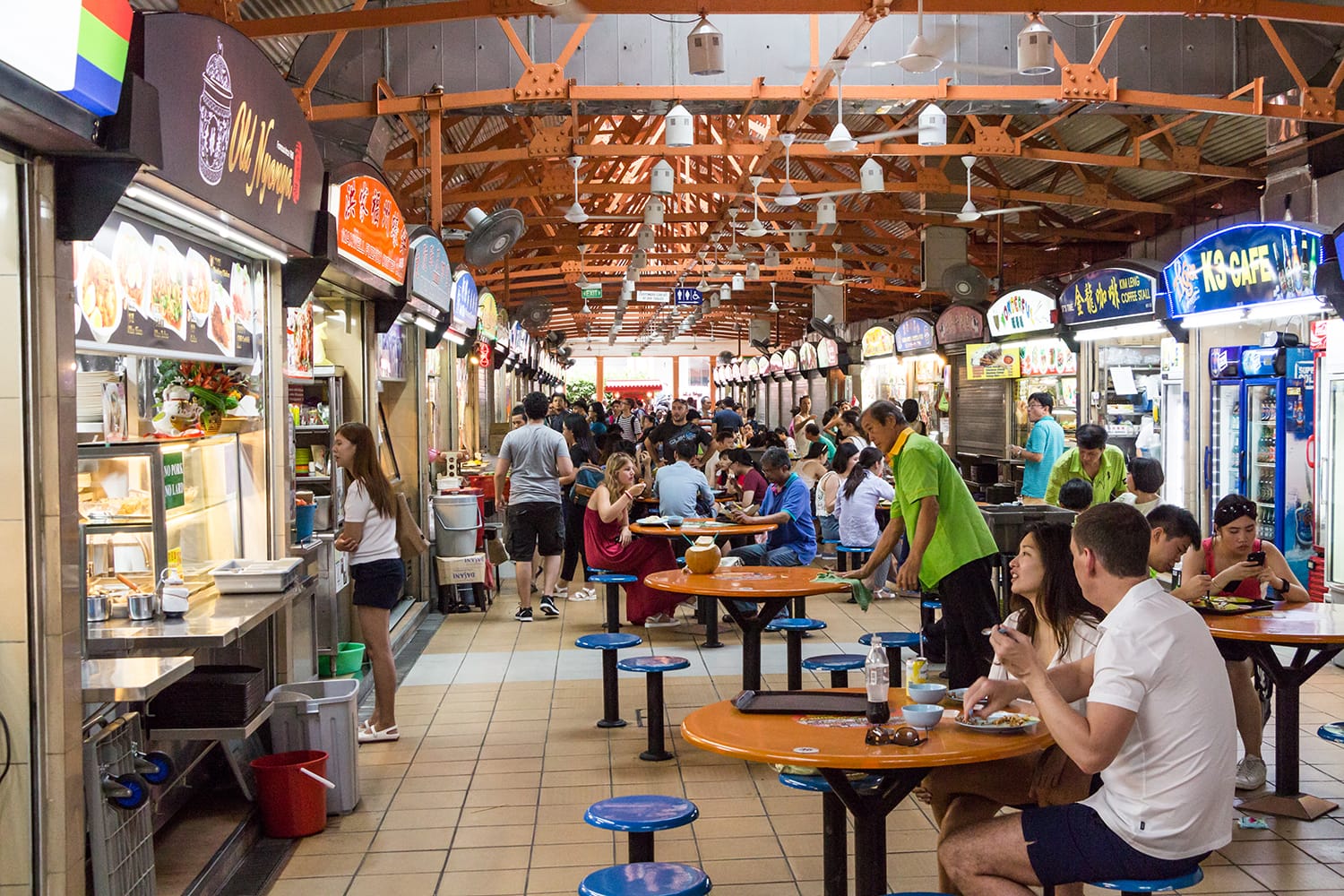
Singapore Itinerary: Day 2
Moving away from the downtown area for the most part, your second day in Singapore is all about experiencing the different cultures that blend together so perfectly to make the country what it is.
Orchard Road
One of Singapore’s most famous streets, Orchard Road is the first destination of the day. While it once was home to plantations that gave it its name, Orchard Road is now Singapore’s premier shopping street, full of luxury designer shops, department stores, and malls. Even if you don’t have the funds to go shopping here, there’s no price-tag on window shopping and people watching.
The road also runs through some very well-to-do neighborhoods, so you may catch a glimpse of Singapore’s wealthy elite nearby. For instance, the official residence of the President of Singapore, the Istana, sits along the eastern end of Orchard Road.
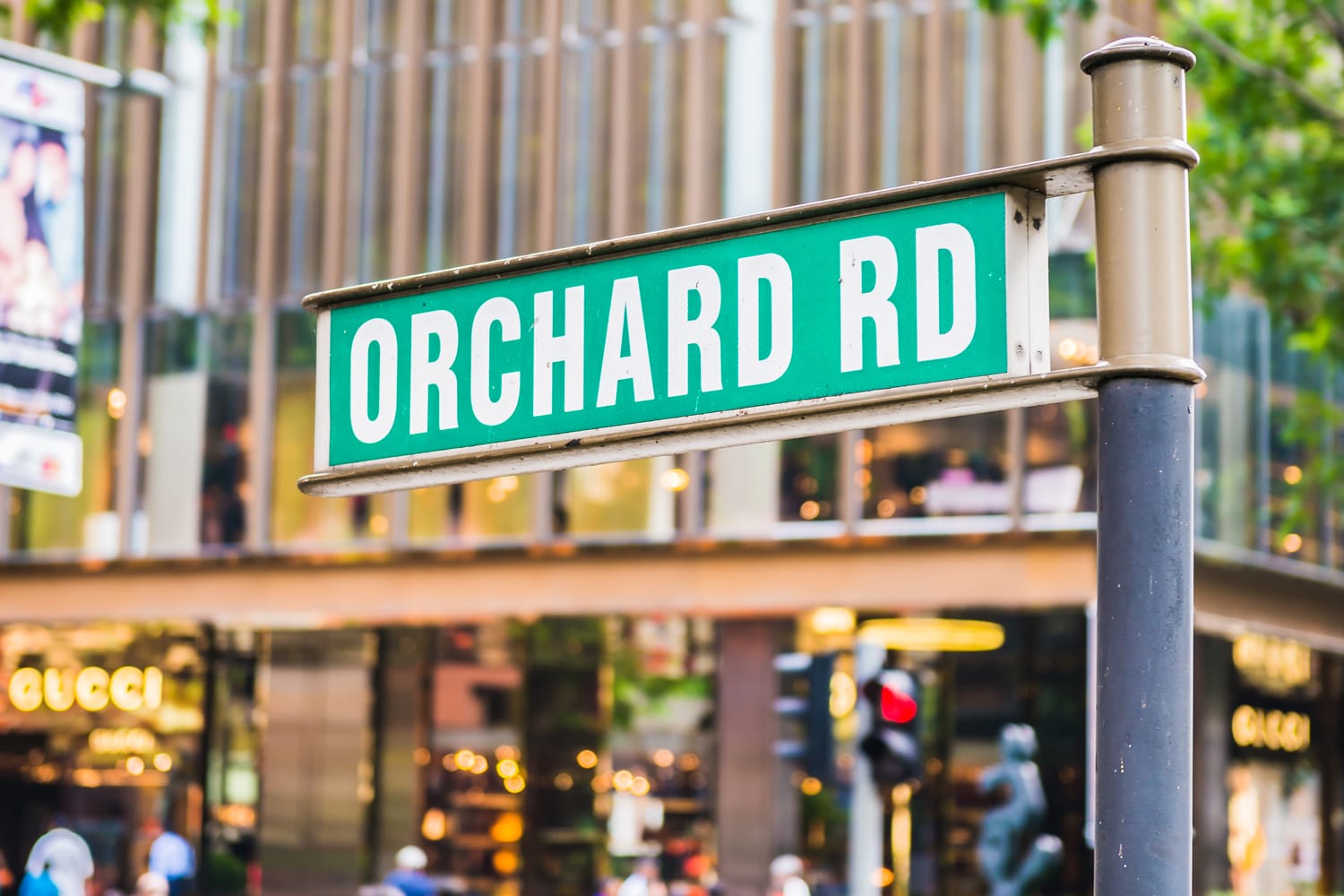
Emerald Hill Road
Just off Orchard Road you’ll find Emerald Hill Road with a picturesque little neighborhood. What makes this one street so appealing to tourists is both the many beautiful turn-of-the-century Chinese Baroque buildings, and the great local vibe. Despite its proximity to Orchard Road, this street feels worlds away, and with its many bars you could easily imagine coming here as a local for a relaxed drink. Of course, you need not only imagine and could very well do exactly that.
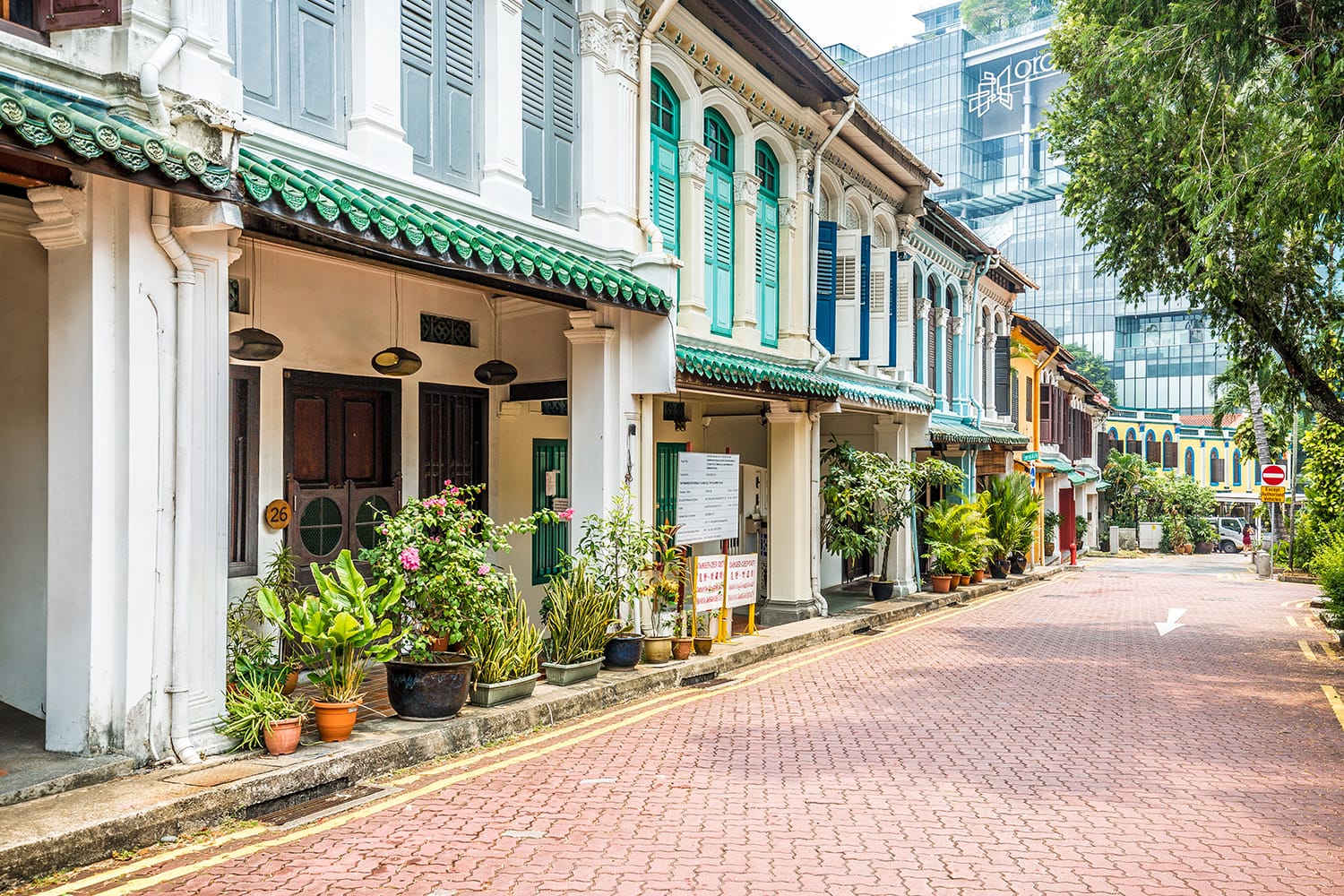
Little India
Starting our tour of Singapore’s multicultural neighborhoods we begin with Little India. There’s no mistaking where you are once you set foot in this bright and colorful district. Throughout the multi-colored streets of the area you’ll spot many temples with incense wafting from them, and countless stores selling spices, saris, garlands, and more. Little India has also become one of Singapore’s best districts to find street art, so keep an eye out.
While the area is called Little India, you won’t just find Hindu temples here. Islam, Buddhism, and Taoism are all represented in the neighborhood, reinforcing Singapore’s spirit of diversity and integration. The most popular temple in Little India for visitors is the Sri Veeramakaliamman Hindu Temple, which is hard to miss with its vivid street front facade.
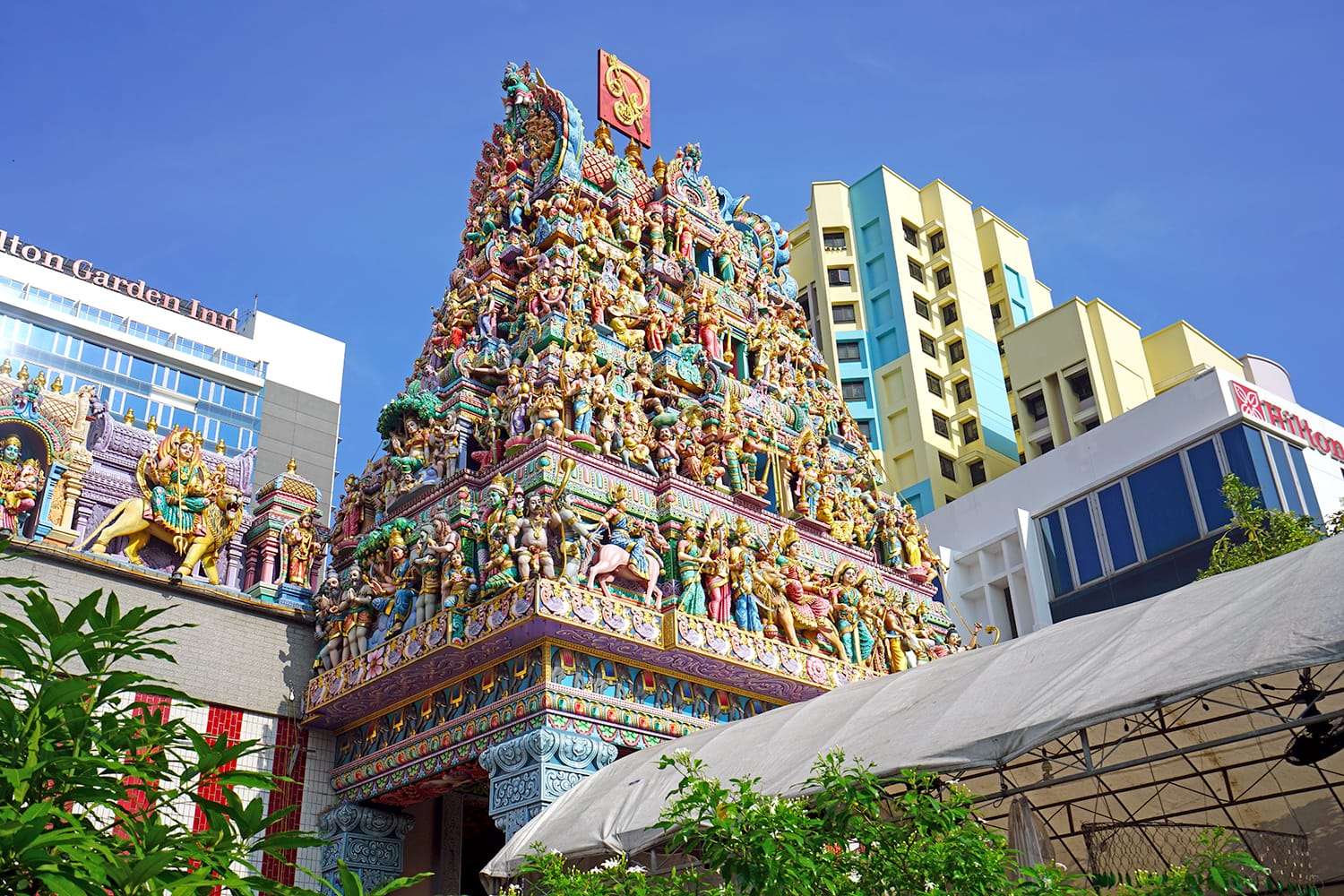
Kampong Glam
Next you’ll cross over into the city’s Muslim quarter of Kampong Glam. While the people who live in Kampong Glam come from various backgrounds, there’s still a strong Islamic feel to the area with the district’s main landmark being the beautiful, golden Sultan Mosque (Masjid Sultan). While the mosque is an active place of worship, it is open to visitors as well.
The other big draws for tourists to Kampong Glam are Arab Street and Haji Lane. Lined with colorful houses, these two adorable streets are a treat to explore and full of cafes, restaurants, and bars. It’s worth noting that Haji Lane in particular is a thriving hub for local, independent designers and as such is full of boutique and vintage stores. If Orchard Road felt too international and mainstream, Haji Lane will be more up your alley.
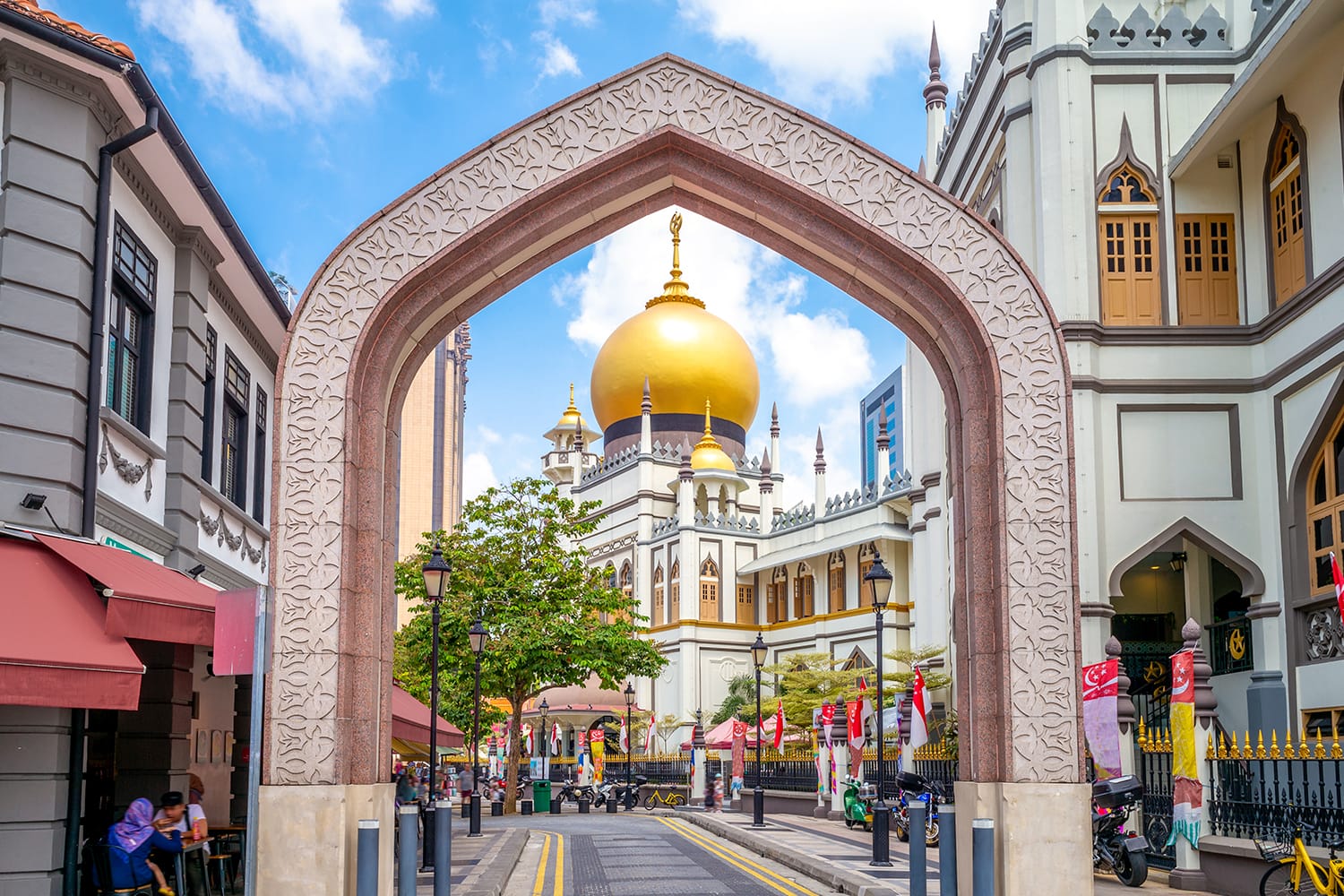
Buddha Tooth Relic Temple
Before we get into the majority of the sights in Chinatown, let’s first focus on one of its star attractions, the Buddha Tooth Relic Temple. This incredible Buddhist temple is not to be missed thanks to its stunning traditional architecture, despite only being built in 2007. As its name suggests, the temple houses a tooth relic of Buddha that visitors can see on the temple’s fourth floor. Down on the third floor, in the Buddhist Culture Museum, other revered relics can be found. There is also a prayer wheel pagoda in the temple’s peaceful rooftop garden.
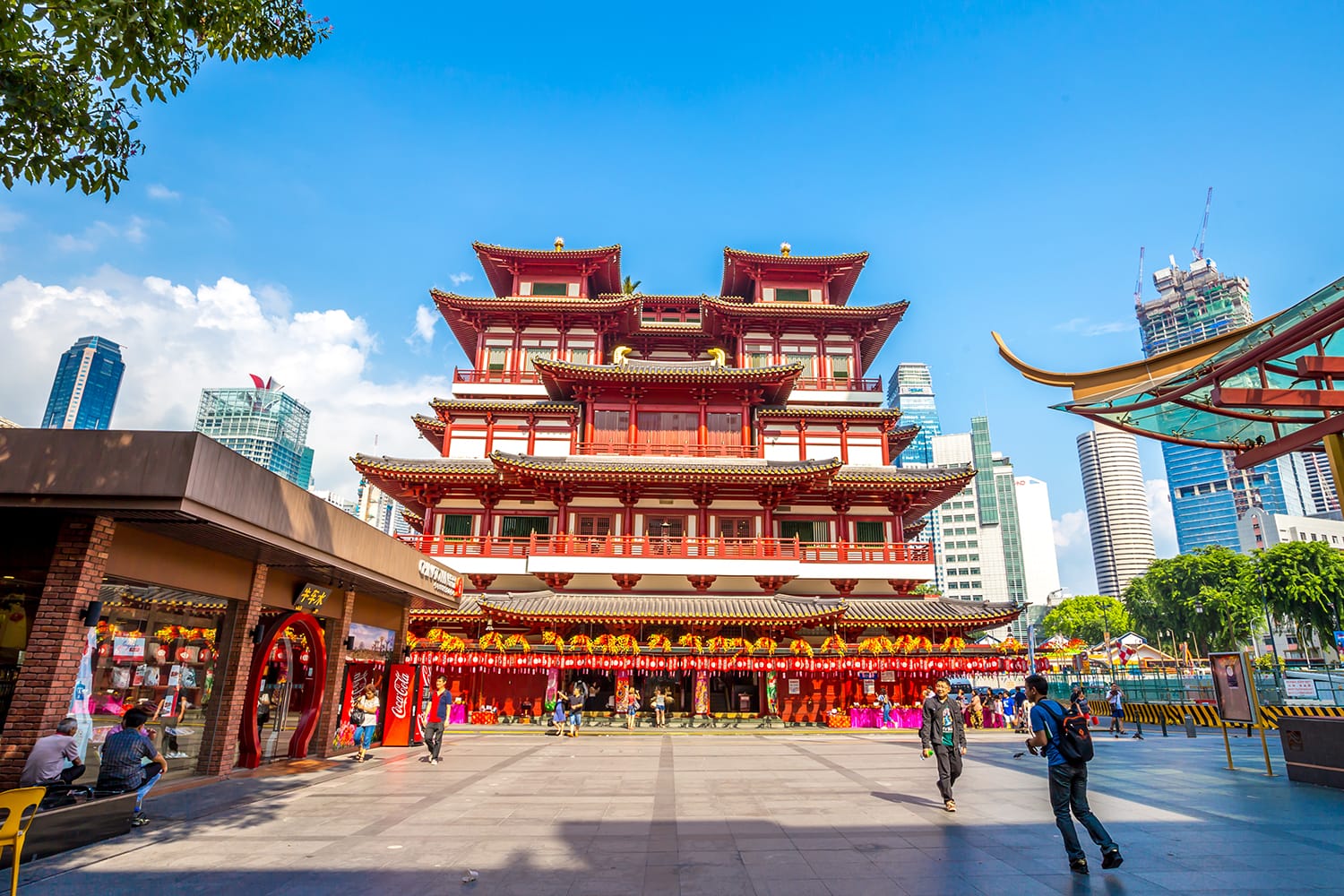
Chinatown
And now we get to our last of Singapore’s ethnic quarters, the forever bustling Chinatown. Among the busy streets of this pocket of the city center, you’ll spot old-fashioned shophouses with Chinese lanterns hanging between them. Filling many of the streets you’ll find stalls selling pretty much anything you can imagine. For some insight into the area’s history, head to the Chinatown Heritage Centre and check out its photos that show what the neighborhood was once like.
Chinatown also happens to be the perfect place to get dinner and taste various Singaporean and Chinese dishes. You won’t have any trouble finding places to eat at the huge Chinatown Hawker Center which is full of locals, while the Chinatown Food Street boasts plenty of street food vendors.
If you want to learn more about Chinatown, and Chinese history and culture, consider joining a guided walking tour.
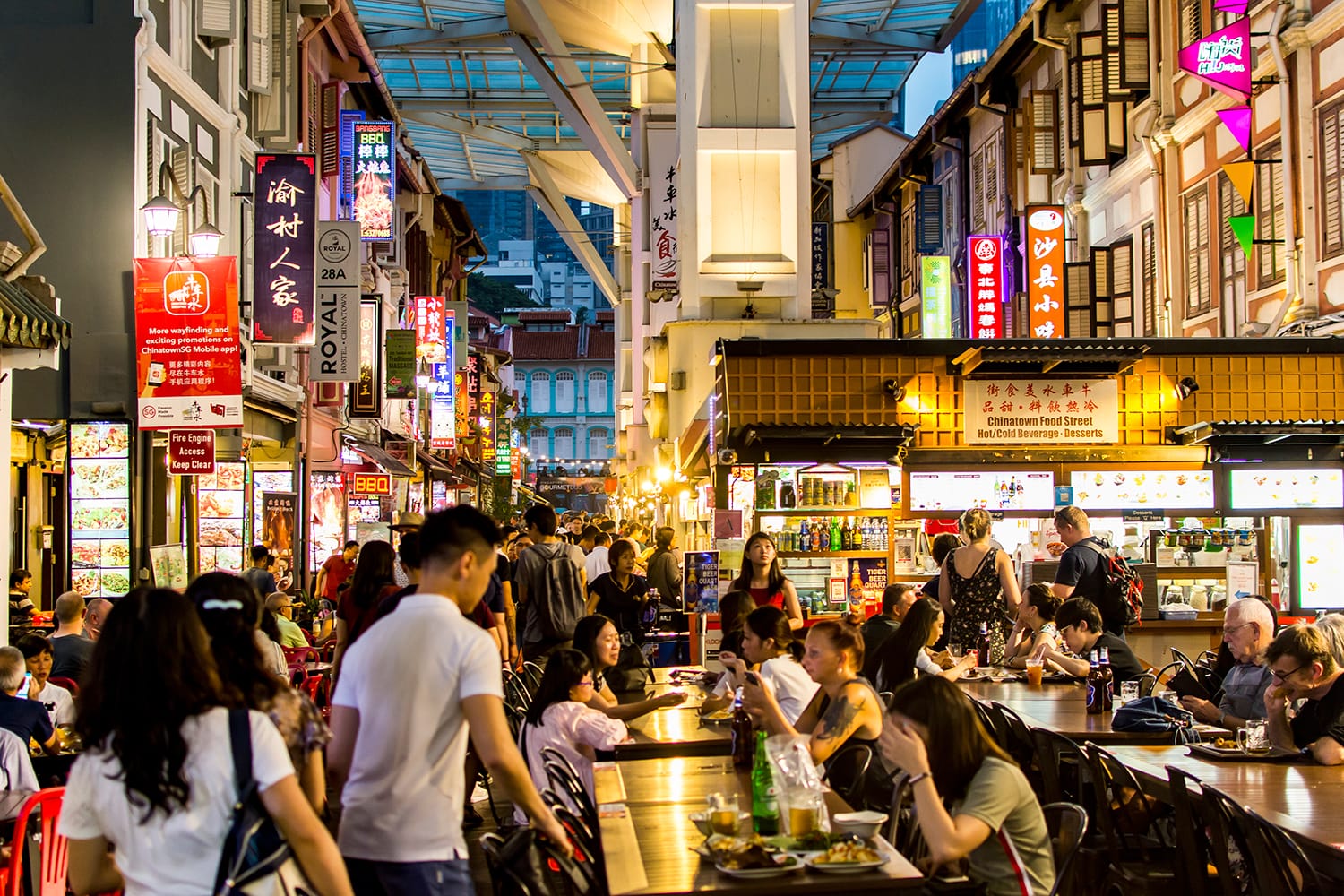
Clarke Quay
Having hopefully filled your bellies with tasty dishes in Chinatown, walk it off by heading over to Clarke Quay. Sitting along the Singapore River, Clarke Quay is a fun waterfront area full of bars, clubs, and restaurants which cater to the office workers in the nearby Central Business District. Still, since it’s attractively lit up at night and has so many places to grab a drink, the quay is perfect for post-dinner drinks. It’s also possible to hop aboard a cruise here and float through Singapore’s waterways to see what the city looks like at night.
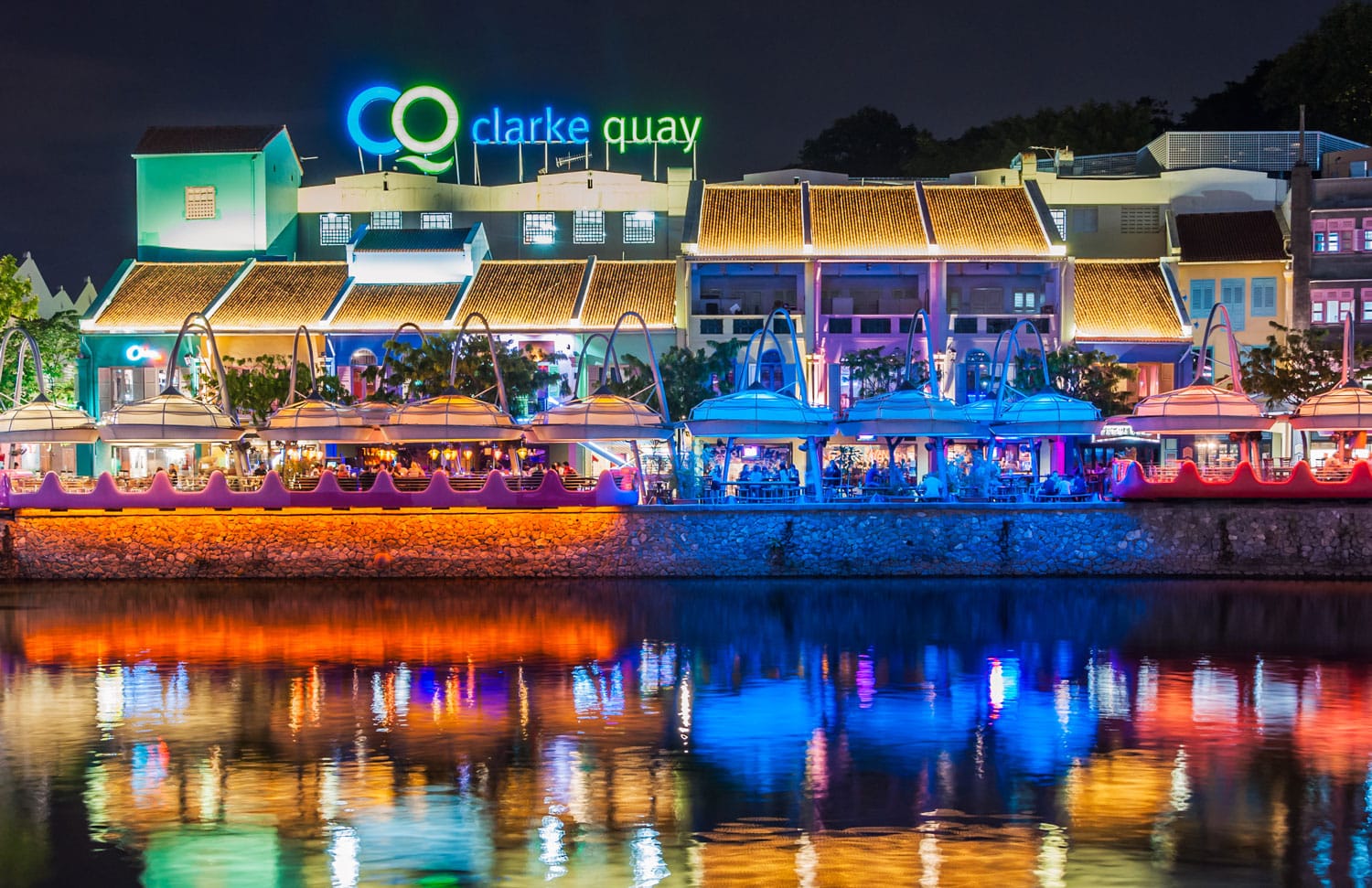
Singapore Itinerary: Day 3
Having spent your first two days in Singapore seeing what the heart of the city has going for it, your last day allows you the perfect chance to explore further. Round out your 72 hours in Singapore by choosing one of Singapore’s many attractions found a little further out. That way, you’ll be able to customize your trip a bit and see more of what makes Singapore so special.
1. Sentosa Island
To see a different side of Singapore, many travelers choose to head for the popular resort island of Sentosa. Just southwest of the city center, Sentosa Island is a place where visitors will find Singapore’s beaches, golf courses, amusement parks, making it perfect for all ages and interests.
Singapore isn’t really much of a beach getaway, with Sentosa Island really being the only exception. Evenly separated along the island’s southern shore you’ll find three beaches on Sentosa: Siloso Beach, Palawan Beach, and Tanjong Beach. Each have their own atmosphere which will suit different types of people, but one thing they have in common is beautiful white sand. Plus with free public access, Sentosa’s beaches are ideal for travelers on a budget looking for something to do.
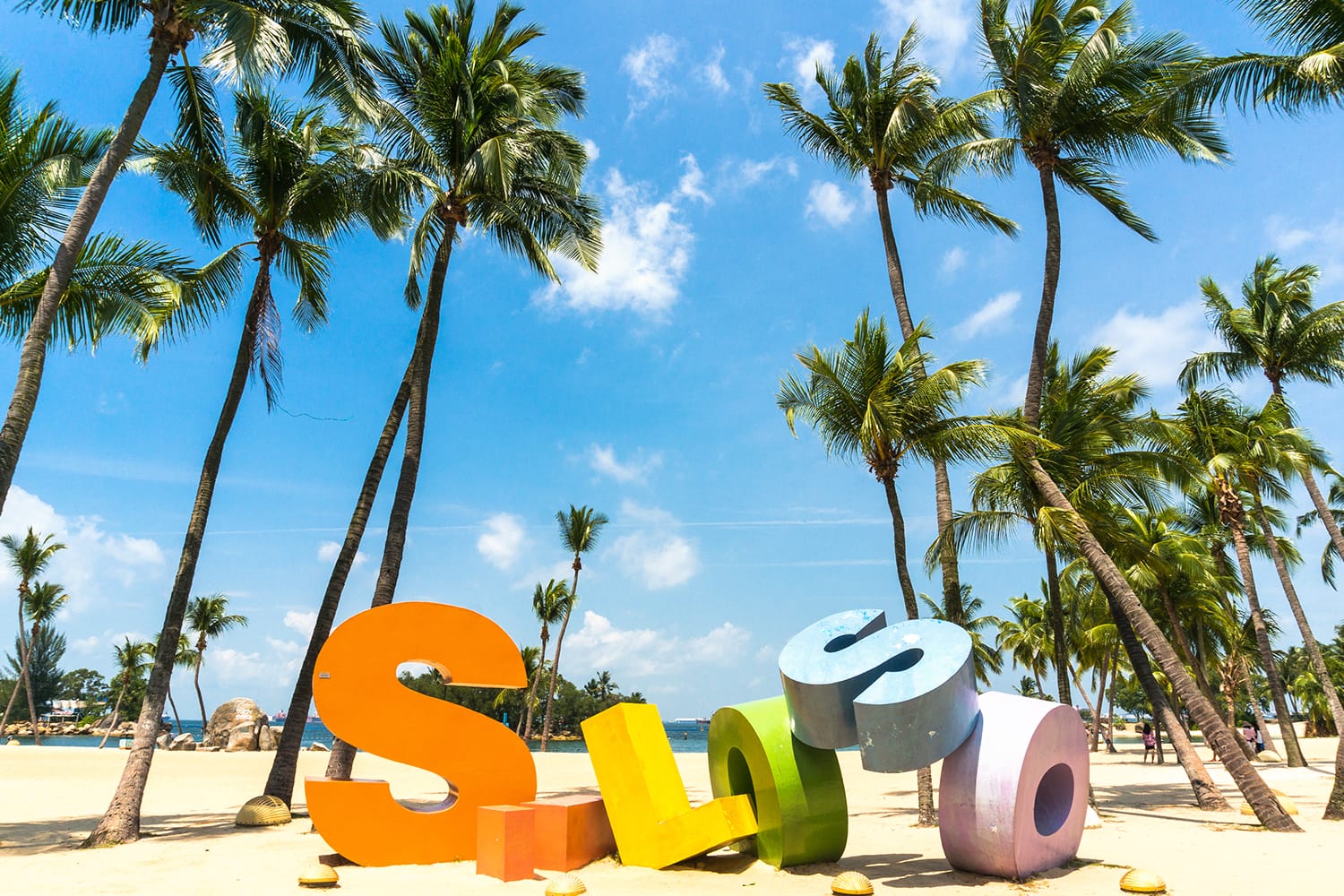
The other thing Sentosa is known for is it amusement and nature parks, with such a variety of places you’ll have to pick and choose where you want to go. Most popular is unquestionably the Universal Studios theme park, with all sorts of rides, shows, and much more to keep you entertained. Another of the popular parks is Adventure Cove Waterpark Singapore where you’ll find waterslides, wave pools, and other fun water-related activities.
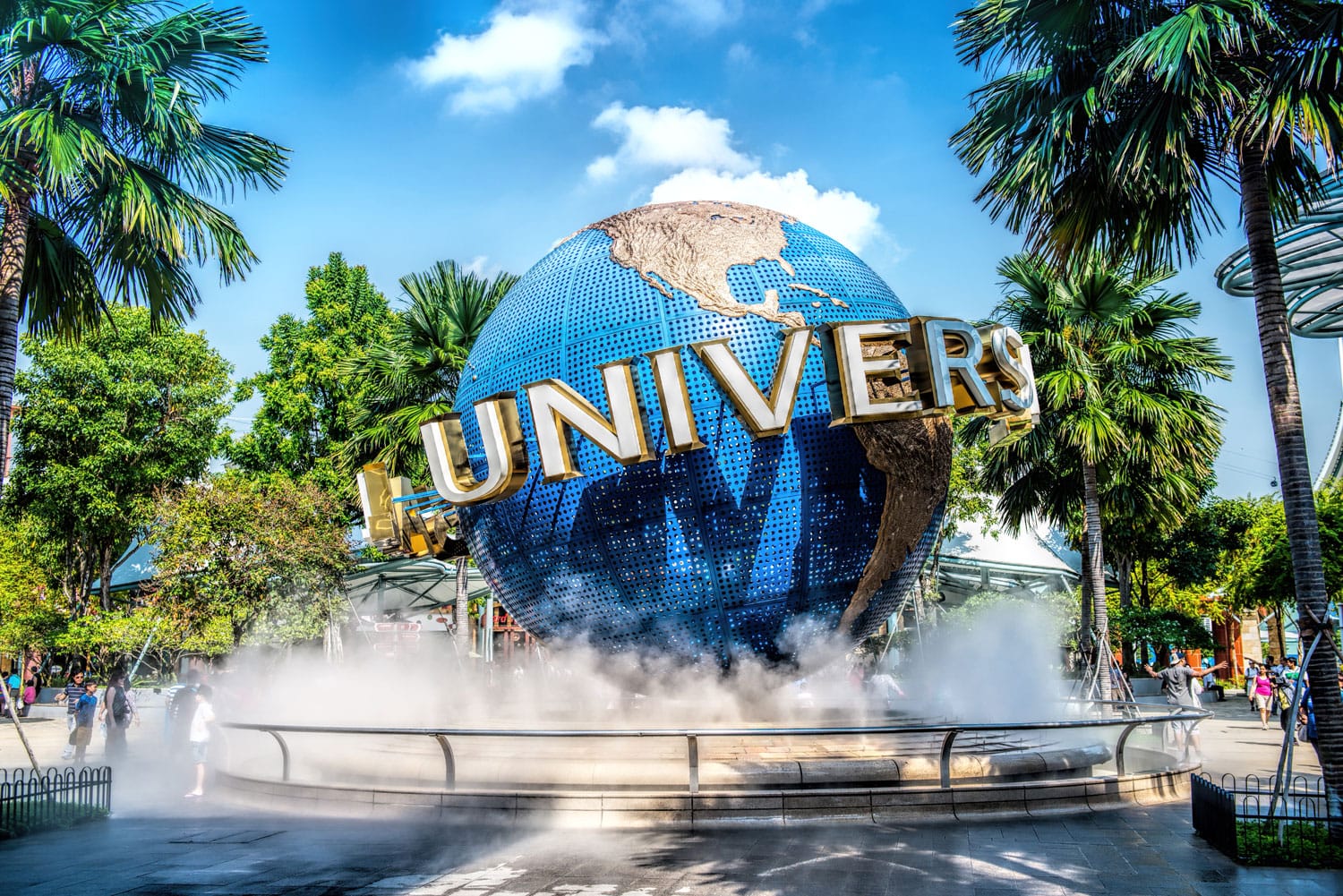
2. Singapore Botanic Gardens
Singapore’s reputation as a green city full of gardens rings true with the Singapore Botanic Gardens. These massive gardens are home to such an incredible array of plant life that they were inscribed by UNESCO as a World Heritage Site, one of very few botanic gardens to receive the honor.
Before the Botanic Gardens were established in 1859, the area was home to ancient rainforests, a portion of which still exists inside the gardens. Visitors can explore this dense rainforest along a boardwalk trail, while other trails lead between the many gardens, lawns, and lakes that cover the park’s 82 hectares. Walking around you may even spot some local wildlife who call the gardens home, including swans and monitor lizards.
The gardens are also known for their themes, like the Ginger Garden where over 200 hundred different species of ginger grow. The star attraction though, and the only part that doesn’t have free entry to the public, is the National Orchid Garden. Considered the world’s most complete orchid garden, those with a green thumb will marvel at the hundreds of different species and hybrids of orchids on display.
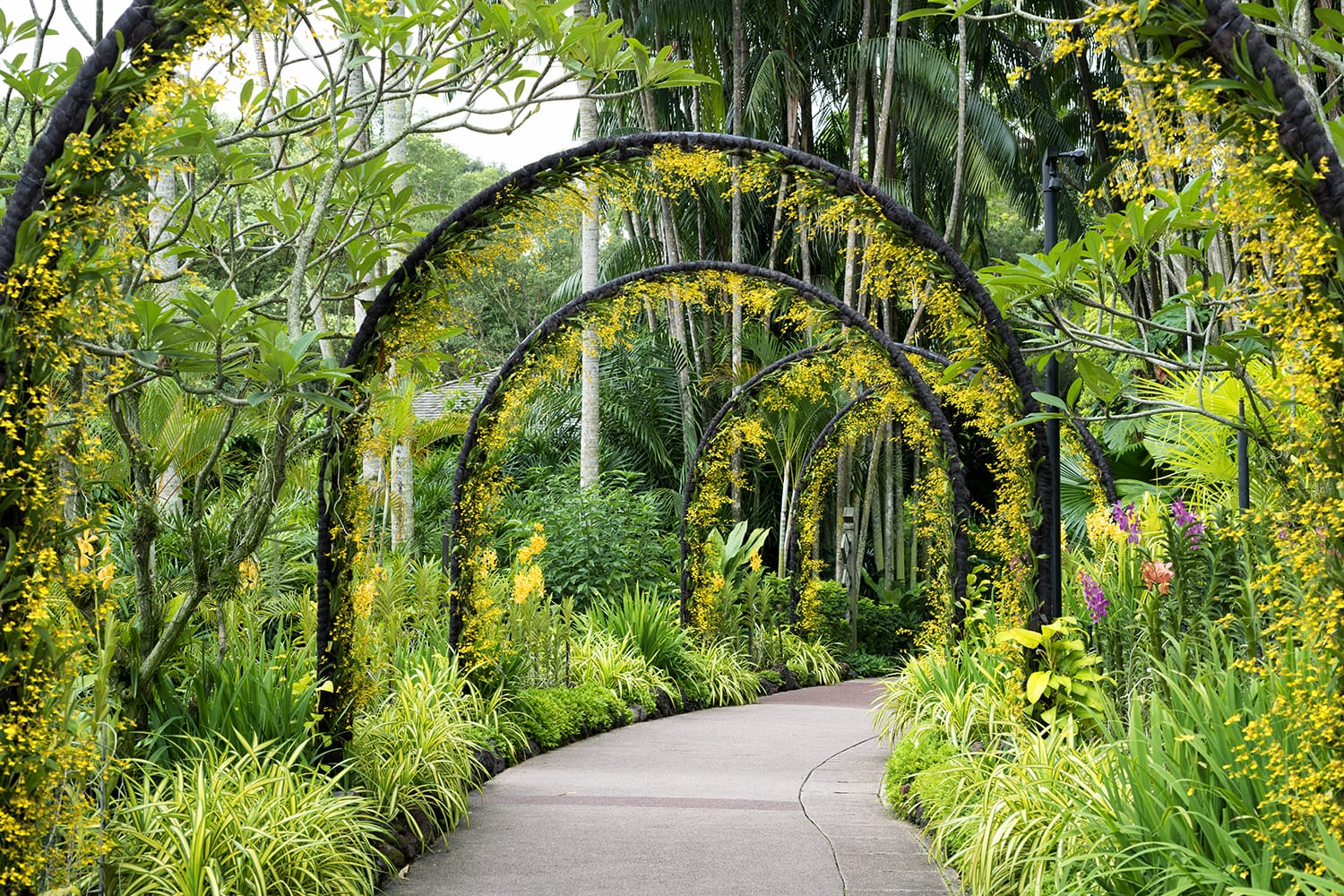
3. Jurong Bird Park
For bird and wildlife lovers there’s no better place to visit in Singapore than Jurong Bird Park. Found in western Singapore, this fantastic bird sanctuary is home to 3,500 birds across 400 different species. Spending time at Jurong Bird Park, you’ll be able to see birds from across the globe all in one place.
Visitors have the choice of following walking paths or riding on the park’s tram to move between the park’s different zones. Each zone at Jurong Bird Park reflects different natural habitats, with different environments for birds from different parts of the world and even a “World of Darkness” zone for nocturnal birds such as owls.
Among the many zones you’ll want to see, one that quickly grabs people’s attention is the Penguin Coast. Here you’ll be able to watch several species of penguin swim and play, while there’s also a place for visitors to help feed the park’s African penguins. Other notable spots include Flamingo Lake and the Wetlands, while the Waterfall Aviary centers on a gorgeous 30 meter-high waterfall. There are also daily shows where guests can see the birds in action.
Skip the lines and buy your admission ticket to the Jurong Bird Park in advance here.
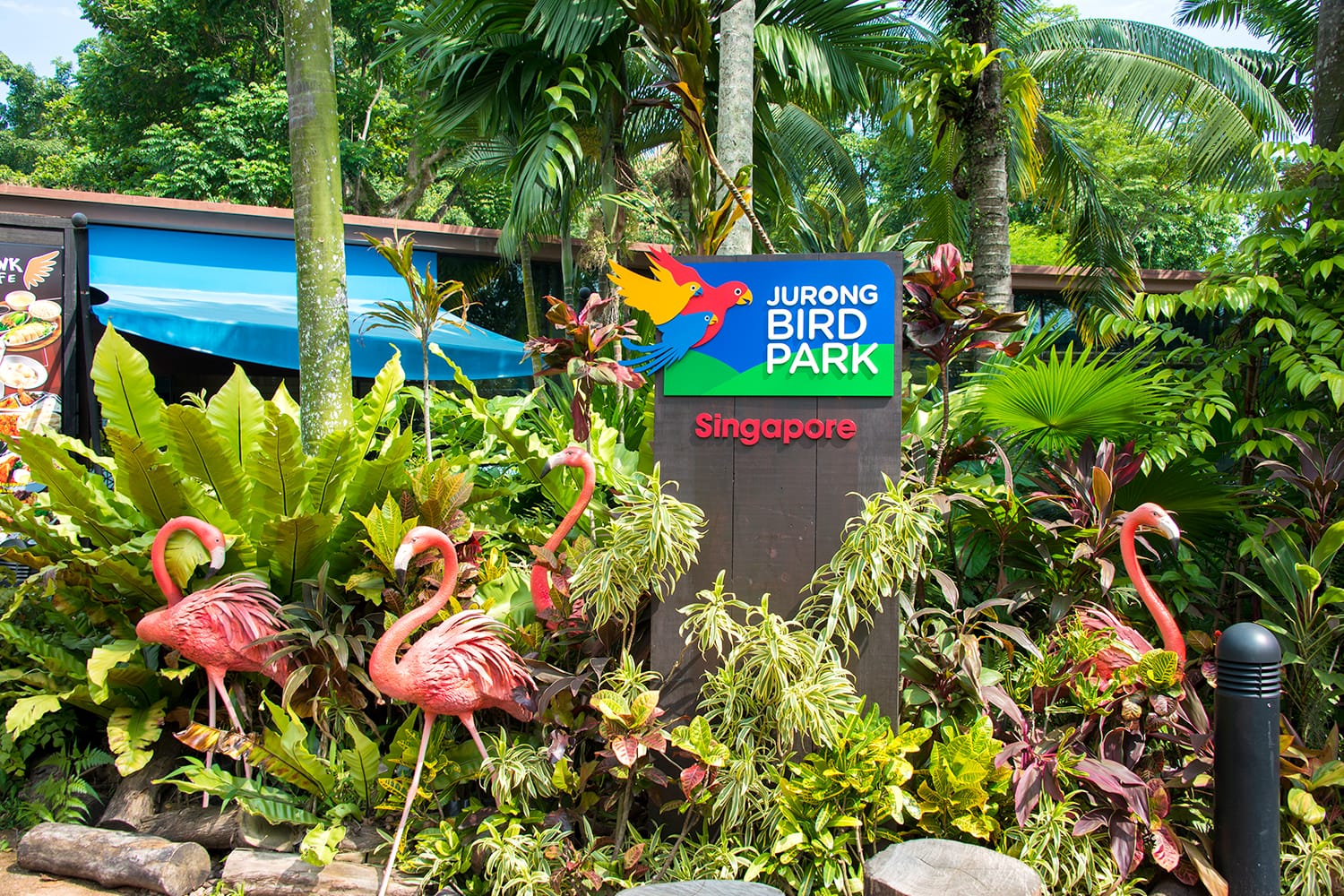
It’s a lot, but you now have everything you need for a great time exploring Singapore in 3 days. With our Singapore itinerary to guide you, getting ready for your Singapore trip should be a cinch, and once there you’re bound to have a blast.
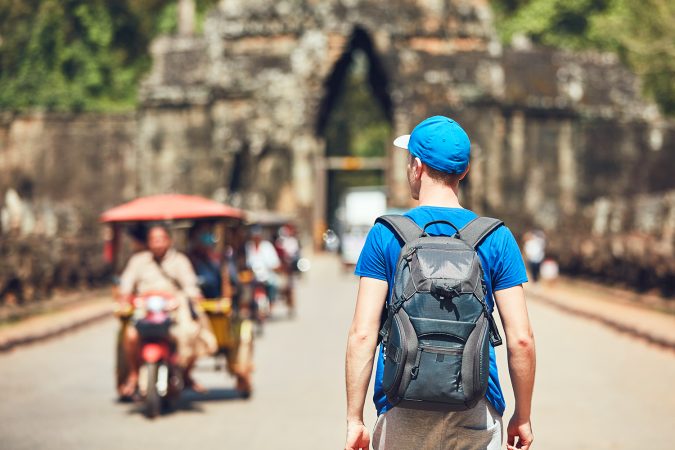
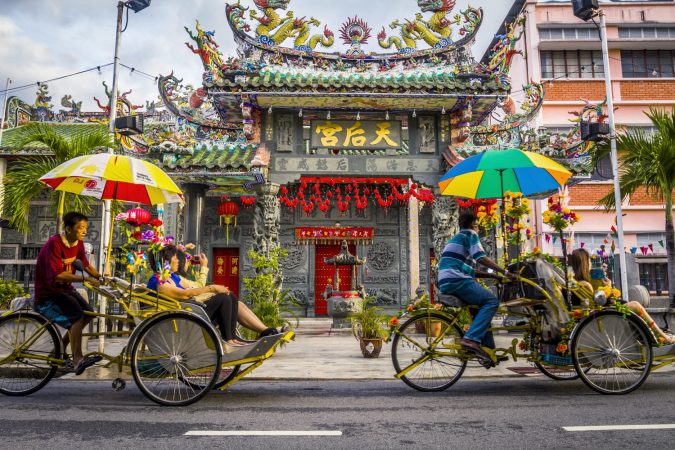
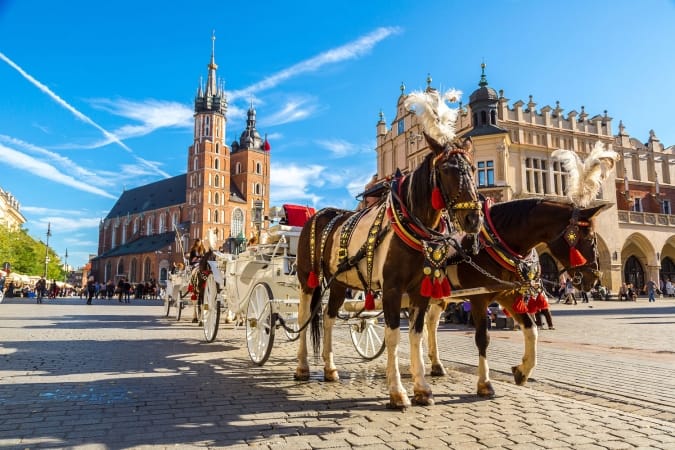
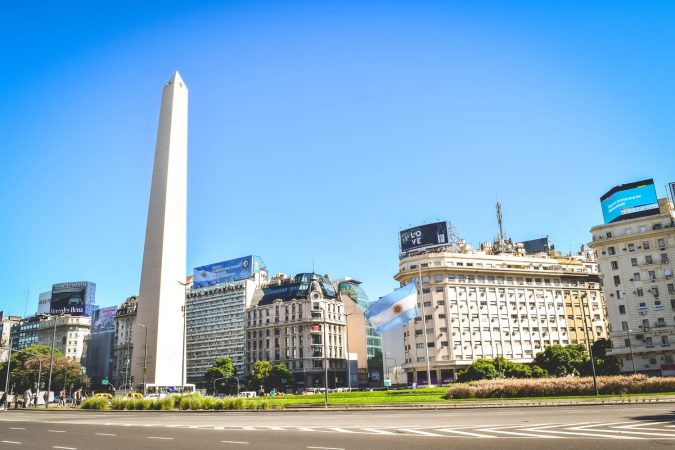
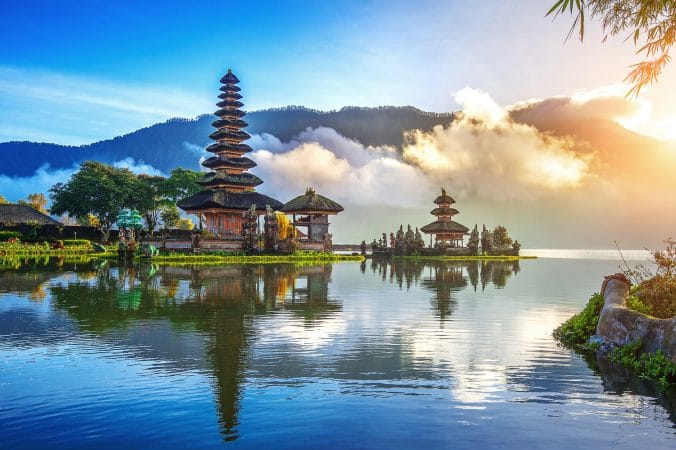


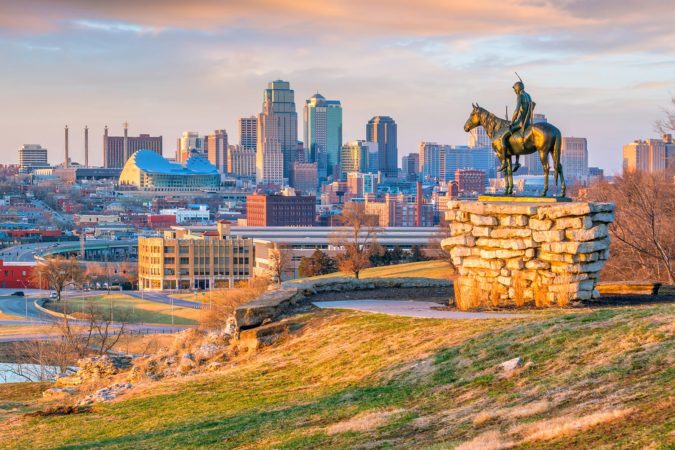
Comments